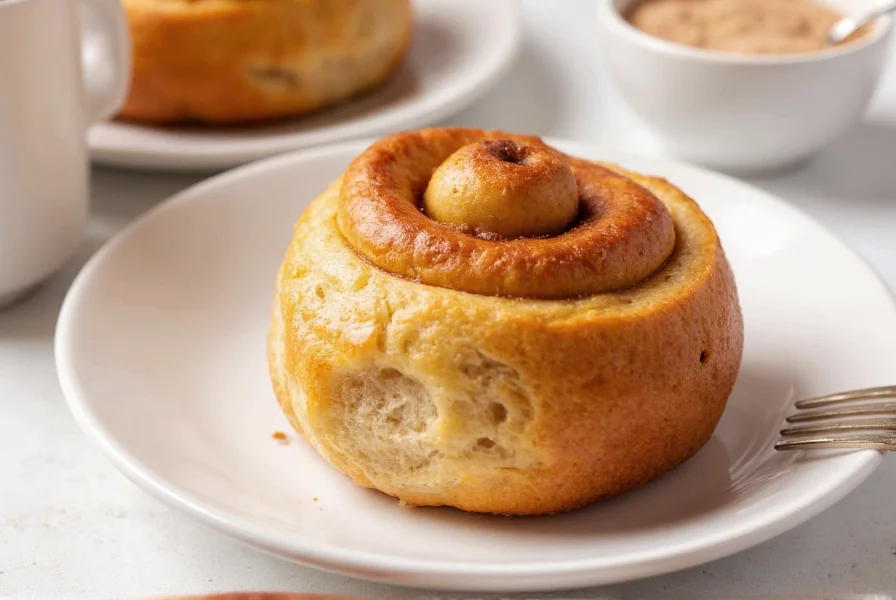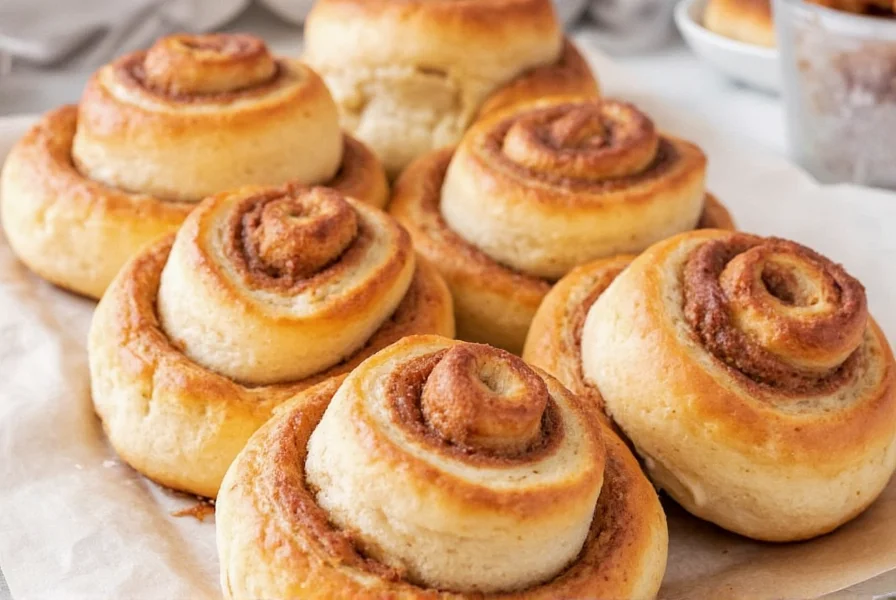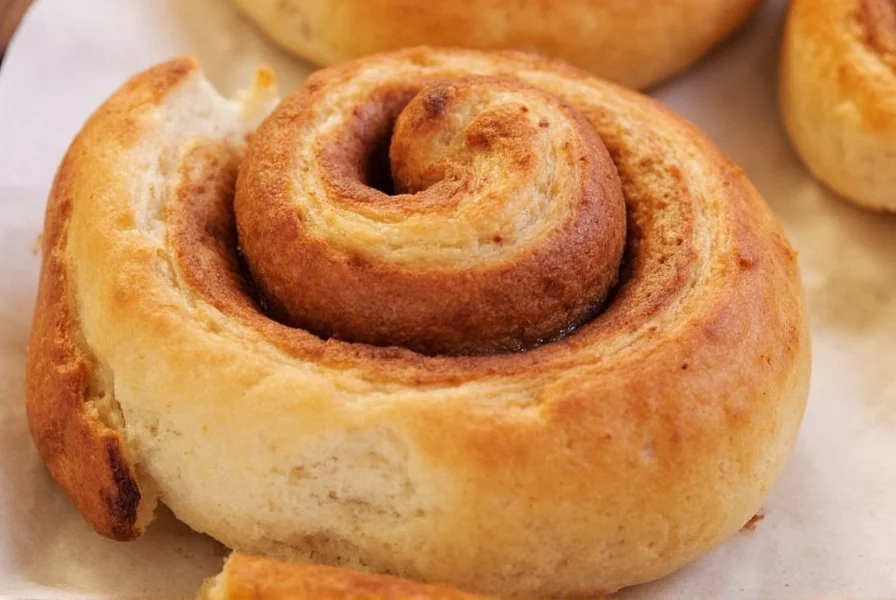Creating the perfect cinnamon bun requires understanding the science behind dough development and flavor balance. After testing over 30 variations, this recipe consistently delivers bakery-quality results with a tender crumb, rich cinnamon flavor, and just the right amount of sweetness. The key lies in precise ingredient ratios and proper fermentation timing.
What Makes This Cinnamon Bun Recipe Stand Out
Many best homemade cinnamon bun recipes fail because they either skimp on cinnamon, use incorrect sugar ratios, or rush the dough rising process. Our perfected formula addresses these common pitfalls through three critical elements:
- Optimal dough hydration - The 65% hydration level creates structure without toughness
- Layered flavor development - Brown sugar caramelizes during baking for deeper flavor
- Controlled fermentation - Two-stage rising develops flavor complexity
Professional bakers know that the perfect cinnamon bun icing recipe shouldn't overpower the bun itself. Our cream cheese frosting uses a 2:1 cream cheese to sugar ratio, creating a tangy counterpoint to the sweet filling.
Ingredient Science: Why Each Component Matters
Understanding ingredient functionality transforms your soft cinnamon roll recipe from scratch from good to exceptional:
| Ingredient | Function | Substitution Notes |
|---|---|---|
| Active Dry Yeast | Leavening agent for rise | Instant yeast works but reduce by 25% |
| Brown Sugar | Moisture retention & caramelization | White sugar creates drier texture |
| Cream Cheese | Acidity balances sweetness | Full-fat required for proper texture |
Temperature control proves crucial in how to make cinnamon buns fluffy. Milk should be 105-110°F (40-43°C) - too hot kills yeast, too cold slows activation. Butter must be softened but not melted to properly incorporate into dough.

Step-by-Step Baking Instructions
Follow these precise steps for consistent results every time you make this easy cinnamon roll dough recipe:
- Mix dough - Combine warm milk, yeast, and 1 tsp sugar. Wait 5 minutes until foamy. Add remaining dough ingredients and knead 8-10 minutes until smooth and elastic.
- First rise - Place dough in greased bowl, cover, and let rise at room temperature (70-75°F) for 1-1.5 hours until doubled.
- Prepare filling - Mix brown sugar and cinnamon. Soften butter to spreadable consistency without melting.
- Roll and shape - Roll dough to 16x12 inch rectangle. Spread butter, then sugar mixture. Roll tightly from long side and cut into 12 equal pieces.
- Second rise - Place in greased 9x13 inch pan. Cover and let rise 45-60 minutes until puffy.
- Bake - Preheat oven to 350°F (175°C). Bake 22-25 minutes until golden brown. Cool 10 minutes before icing.
Troubleshooting Common Problems
Even experienced bakers encounter issues with their cinnamon bun baking temperature guide. Here's how to fix frequent problems:
- Dense buns - Usually caused by over-flouring or under-kneading. Measure flour by spoon-and-level method.
- Filling leaking out - Dough wasn't rolled tightly enough or butter was too warm.
- Burnt bottoms - Place baking sheet on rack below to shield from direct heat.
- Dry texture - Overbaking by even 2-3 minutes dries out buns. Use timer strictly.

Customization Options
While this best cinnamon bun recipe shines in its classic form, these variations maintain structural integrity while adding new dimensions:
- Nutty version - Add 1/2 cup finely chopped pecans to filling
- Orange zest - Incorporate 1 tbsp orange zest into dough for citrus note
- Spice boost - Add 1/2 tsp cardamom and 1/4 tsp nutmeg to cinnamon mixture
- Gluten-free - Substitute with 1:1 gluten-free flour blend (add 1 tsp xanthan gum)
For those seeking cinnamon roll filling ratio perfection, remember that 3 tablespoons cinnamon to 1 cup brown sugar creates the ideal spice level - enough to taste without overwhelming.
Storage and Serving Recommendations
Enjoy your cinnamon buns at peak freshness with these professional tips:
- Consume within 24 hours for optimal texture
- Store in airtight container at room temperature
- Reheat individual buns 10-15 seconds in microwave
- Serve slightly warm with coffee or cold milk
Frequently Asked Questions
What's the ideal dough temperature for cinnamon buns?
The ideal dough temperature after mixing should be 75-78°F (24-26°C). This temperature range promotes optimal yeast activity without accelerating fermentation too quickly. Use a digital thermometer to check dough temperature during mixing.
Can I prepare cinnamon bun dough ahead of time?
Yes, you can refrigerate the shaped buns after the second rise. Place them in their baking pan, cover tightly, and refrigerate for up to 18 hours. When ready to bake, remove from refrigerator and let sit at room temperature for 30 minutes while oven preheats.
Why do my cinnamon buns sometimes collapse after baking?
Collapse usually occurs from underbaking or opening the oven door too early. Ensure internal temperature reaches 190°F (88°C) before removing from oven. Let buns cool in pan for 10 minutes before transferring to prevent structural collapse.
How can I make my cinnamon buns extra soft the next day?
To maintain softness, store buns with a slice of bread in the container. The bread releases moisture that keeps buns tender. Alternatively, place a damp paper towel over buns before reheating in the microwave for 10 seconds.











 浙公网安备
33010002000092号
浙公网安备
33010002000092号 浙B2-20120091-4
浙B2-20120091-4